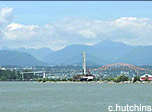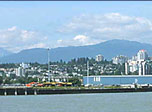March 16, 2025
The United States's tariff policy
is now focused on dealing with its yearly deficit in federal spending. The US
is in trouble with its annual budget. It had a disastrous federal shortfall of
$1.83 trillion in fiscal 2024.
Trump is responding in several
ways. The first is a significant budget Bill that calls for trillions of
dollars in spending and tax cuts, which must not deepen the deficit while
keeping tax levels low.
The next is internal efficiencies
found through Elon Musk's Department of Government Efficiency. Finally, tariffs
are a revenue source and an incentive to reposition investment into the United
States.
The plan is to impose tariffs on
countries worldwide. The countries that submit to the US may be able to
mitigate tariffs in exchange for US advantages.
As a direct response to Trump's
actions, Canada has retaliated by applying a 25% tariff to some $60 billion
worth of American goods entering Canada. This tit-for-tat escalation is a clear
sign of deteriorating US-Canada relations. If the US continues its aggressive
policies towards Canada, more Canadian tariffs are on the horizon, further
straining the relationship.
To help politically with the
American voter, Trump has been ‘trash-talking’ against Canada to justify his
economic aggression.
Here is a fact check of Trump’s false statements, a crucial exercise in the current political climate to keep the public informed and empowered.
Canadians' views on becoming the
51st state: In January, Trump falsely claimed to reporters that the people of
Canada liked his idea of Canada joining the US. In fact, all polls show the
idea is massively unpopular with Canadians. All Canadian political leaders have
vehemently rejected the notion. The nation felt insulted and betrayed by its
friend.
The US trade deficit with Canada:
Trump has repeatedly said the US has a $200 billion trade deficit with Canada.
That is false. Canada is the USA's best international customer. Take Canadian
oil out of the equation, and Canada has a trade deficit, and the US has a
surplus of $58 billion. Canada also subsidizes the US, as the US does not pay
the world price for Canadian oil but gets an insider deal. The US must import
oil to meet its needs.
Canada’s tariffs: Trump falsely
claimed that Canada is among the highest-tariffing nations worldwide. In fact,
Canada has relatively low tariffs, though it has now announced new retaliatory
tariffs in response to Trump's tariffs on Canada. Canada was just 102nd-highest
on a World Bank list of 137 countries' trade-weighted average tariff rates in
2022 – and had a lower average (1.37%) than the United States (1.49%).
Canada's dairy tariffs: Trump
falsely claimed that Canada's dairy tariff situation was well handled when he
left office the first time, but they kept raising it under Biden. In fact,
Canada did not raise its dairy tariffs during the Biden administration. The
tariffs Trump is denouncing were left in place by the US- Mexico- Canada
Agreement that Trump signed in 2018, though that agreement secured greater US
access to the Canadian dairy market, which they have not filled. The US dairy
industry is also highly subsidized.
Trump also fails to mention that
Canada's high dairy tariffs only apply after the US has hit a certain
Trump-negotiated quantity of tariff-free dairy sales to Canada. The US is not
hitting its zero-tariff maximum in any category of dairy sales in Canada, so
tariffs aren’t being applied.
Canada’s imports of US
agricultural products: Trump claimed that Canada doesn’t sufficiently import US
agricultural products. This is false. According to the US Department of
Agriculture, Canada was the world's second-largest buyer of US agricultural
exports in 2024, purchasing about $28.4 billion.
While Canada does limit foreign
access to its dairy, egg, and poultry markets, these are exceptions rather than
the rule. This is done to prevent dumping and boom-and-bust cycles. It also
supports family-sized farms against large corporate takeovers. On its website,
the US Department of Agriculture notes that almost all US agricultural exports
to Canada face zero tariffs or quotas. Canada consistently ranks among the top
markets for US agricultural product exports, representing one of the most
significant and reliable trading partners.
Canada and US banks: Trump
falsely claimed Canada prohibits US banks. While Canada's high-quality regulations
have discouraged some foreign banks from opening retail branches, Canada does
not forbid these banks, as US banks have been operating in Canada for over a
century. The Canadian Bankers Association industry group says, "There are
16 U.S.-based bank subsidiaries and branches with around C$113 billion in
assets currently operating in Canada and that U.S. banks now make up
approximately half of all foreign bank assets in Canada."
Canada, Russia, and China: Trump
falsely claimed that Canada joining the US would secure Canada "from the
threat of the Russian and Chinese Ships that are constantly surrounding
them." Canada has never been
surrounded by Russian and Chinese ships. A few Russian and Chinese military
ships and jets, as well as Chinese research vessels, were viewed with suspicion
by Canada and the US and have been occasionally spotted in recent years in the
vicinity of Alaska – and have been monitored or intercepted by both the
Canadian and US militaries in coordinated protection.
The Canadian government has
warned that among the potential threats in its Arctic, was increased Russian
activity and Canadian air approaches, and China’s regular deployment of dual-use
research and military application vessels as surveillance platforms to collect
data. Canada was never surrounded. Canada is strongly investing in northern
protection.
Trudeau and the trade war: Trump
falsely said in a social media post: “I think that Justin Trudeau is using the
Tariff problem, which he has largely caused, to run again for Prime
Minister.” Trudeau’s successor as Liberal
Party leader and Prime Minister has been installed according to the Canadian
plan. Mark Carney is now Canada's Prime Minister and will soon call a national
election.
Canada's defense spending: Trump
falsely claimed that Canada spends "less than 1%" of GDP on defense.
Official NATO figures show Canada spent an estimated 1.37% of GDP on defense in
2024, up from an estimated 1.31% in 2023. That is short of NATO's 2% target,
which incoming Prime Minister Mark Carney has vowed to meet by 2030. It is not
as low as Trump claimed. However, Canada ranks 7th highest in actual
money spent among NATO's 32 countries. Tariffs make it harder for Canada to
increase its defense spending.
President Trump claims he's
targeting Canada because he's concerned about Canada’s supposedly lax approach on
the border to fentanyl and migrants. It was the initial false excuse for using
emergency powers. Otherwise, it would take an act of Congress.
Data shows Canada has more reason
to worry about what's going north into Canada from the US. There's been an
influx into Canada of illegal aliens, drugs, and guns, which fuels crime,
death, and addiction. Canadian officials seized more illicit drugs coming from
the US last year than what the Americans captured on their side of the 49th
parallel. Criminal activity is a concern on both sides.
The Canadian Border Services
Agency measures cannabis, hashish, cocaine and crack, heroin, some opioids
(like opium, methadone, and morphine), and drug-related precursor chemicals
seized in grams. Transnational criminal organizations profit from substances
that cause great harm to both countries. Canada lives next door to the largest
weapons market in the world, and the largest drug market in the world. Capacity
creates its own demand, and since the US is such a huge market for general
crime that is without adequate suppression enforcement, nefarious opportunities
are filled by criminals.
In response to crime coming to
Canada, as well as Trump's complaints, Canada assigned an additional $ 1.3
billion for border enforcement to assuage US concerns about drugs and migrants.
However, the real benefit is for the public safety of Canadians in terms of
having additional resources to interdict illicit firearms and a host of other
drugs coming north.
Canada is not a significant
source of drugs entering the U.S. Less
than one percent of all fentanyl seized in the US comes from Canada.
In conclusion, Trump's goals are
simple but challenging to achieve with his ham-fisted method. Cultures do not
respond well to threats and aggression. Sometimes, tariffs help discourage bad behaviour,
such as foreign dumping of goods below cost to dominate and control a market.
However, blanket tariffs against
years of developed supply chain efficiencies hurt everyone and will not result in
a new era of "made in the USA."
Additionally, the USA has ruined
its international reputation as a reliable partner and treaty keeper, as trust
has evaporated. Instead of professionally negotiating over problem inequities
and disparities, the USA is alienating the partners it needs for resources and
the customers it would like to have for its products.
The path the USA is on will devolve
into isolation and economic stagnation. International evil tyrants will be
emboldened, and the world will become a more dangerous place. Disturbing the
world economic order to such a degree will possibly give rise to new forms of
terrorism onto American soil. The future looks dark.
Source Significantly from , CNN March 12/25 and varied internet articles.










1 comment:
Hope that things hang together to get past horrible Trump. Things can happen that were never predicted, such as terrorism. I am greatly uneasy about everything not being okay. The most worrisome part, is how mercurial Trump will respond when things get tough. He has betrayed Ukraine. Who else will he betray? Who will have such a sense of anger, that they will commit some horrible act? Since there does not appear to be an orderly, professional decision-making sequence at the White House, the slap-back, unforeseen consequences are also likely to be horrific.
Post a Comment